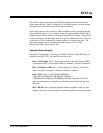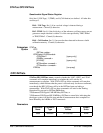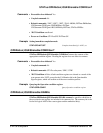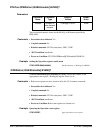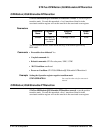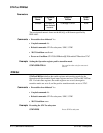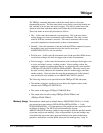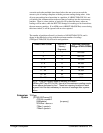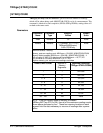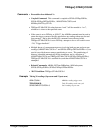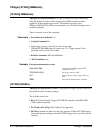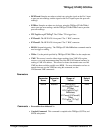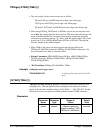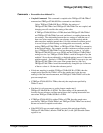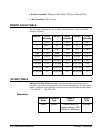
overwrite each other multiple times times before the arm event occurs and the
current cycle of readings completes with the post-arm readings being taken. After
all post-arm readings have been taken in a partition, if ARM:STARt:COUNt is not
yet satisfied, the instrument directs the next burst of readings into the next memory
partition. There is a time window of typically 630
µs between bursts, where no
readings will be taken, while the HP E1429 arranges for readings to be directed into
the next memory partition. If an ARM event (ARM:STARt:SOURce) occurs during
this time window, it will be ignored with no error reported.
The number of partitions allowed is a function of ARM:STARt:COUNt, and is
shown in the table below along with the maximum number of readings
(TRIGger:STARt:COUNt) allowed in each partition.
ARM:STARt:COUNt Number of
Memory
Segments
Maximum Readings
(TRIGger:STARt:COUNt)
1 1 524,288
2 2 262,144
3 - 4 4 131,072
5 - 8 8 65,536
9 - 16 16 32,768
17 - 32 32 16,384
33 - 64 64 8,192
65 - 128 128 4,096
NOTE: If the non-volatile mode of memory is enabled
(MEMory:BATTery:STATe ON), then all of the maximum reading counts
shown above decrease by four. These four memory locations in each
segment hold the data necessary to recover all readings after a power
failure.
Subsystem
Syntax
TRIGger
[:STARt|:SEQuence[1]]
:COUNt <
number
>
[:IMMediate] [no query]
:SOURce <
source
>
:TIMer1 <
period
>
:TIMer2 <
period
>
TRIGger Subsystem Command Reference 273



